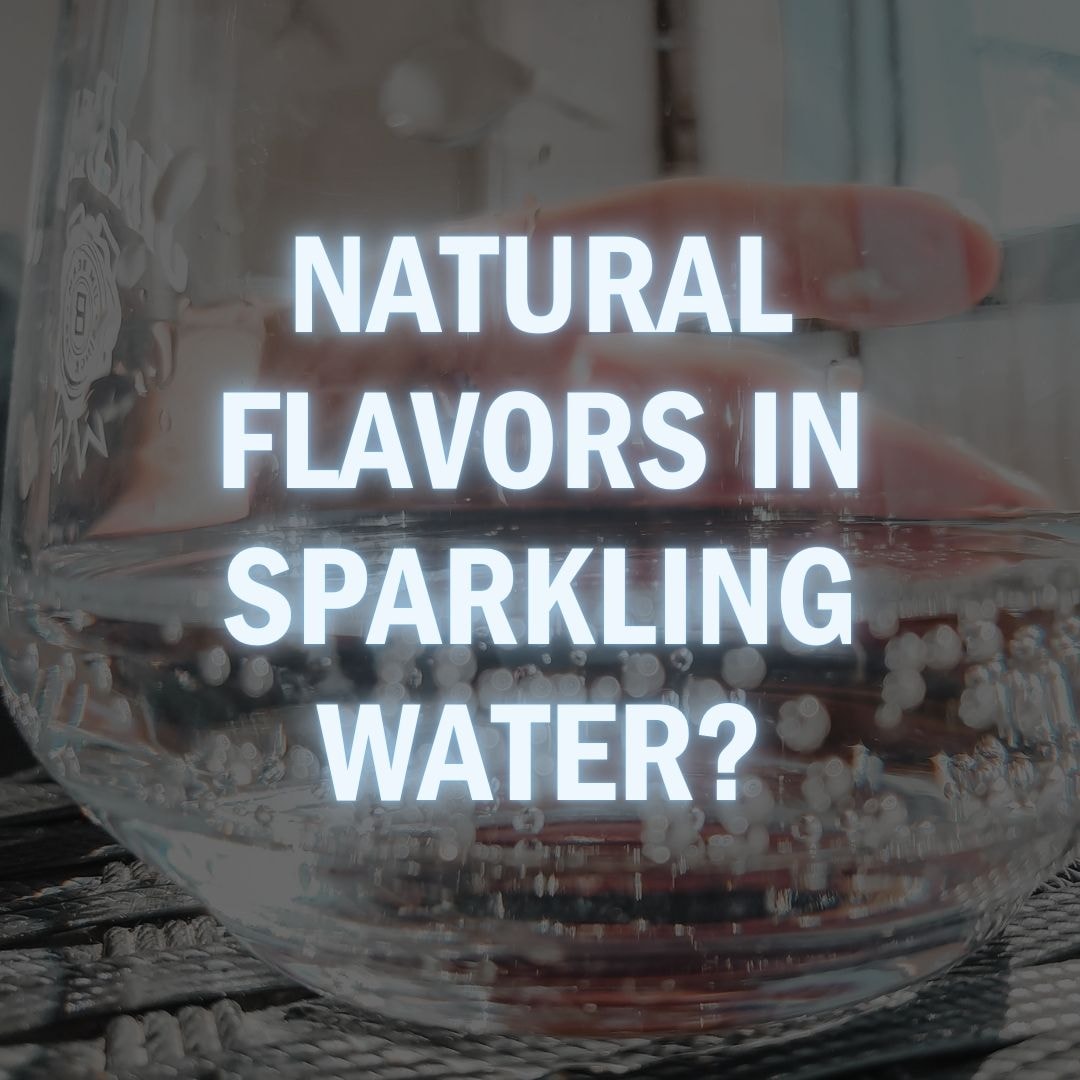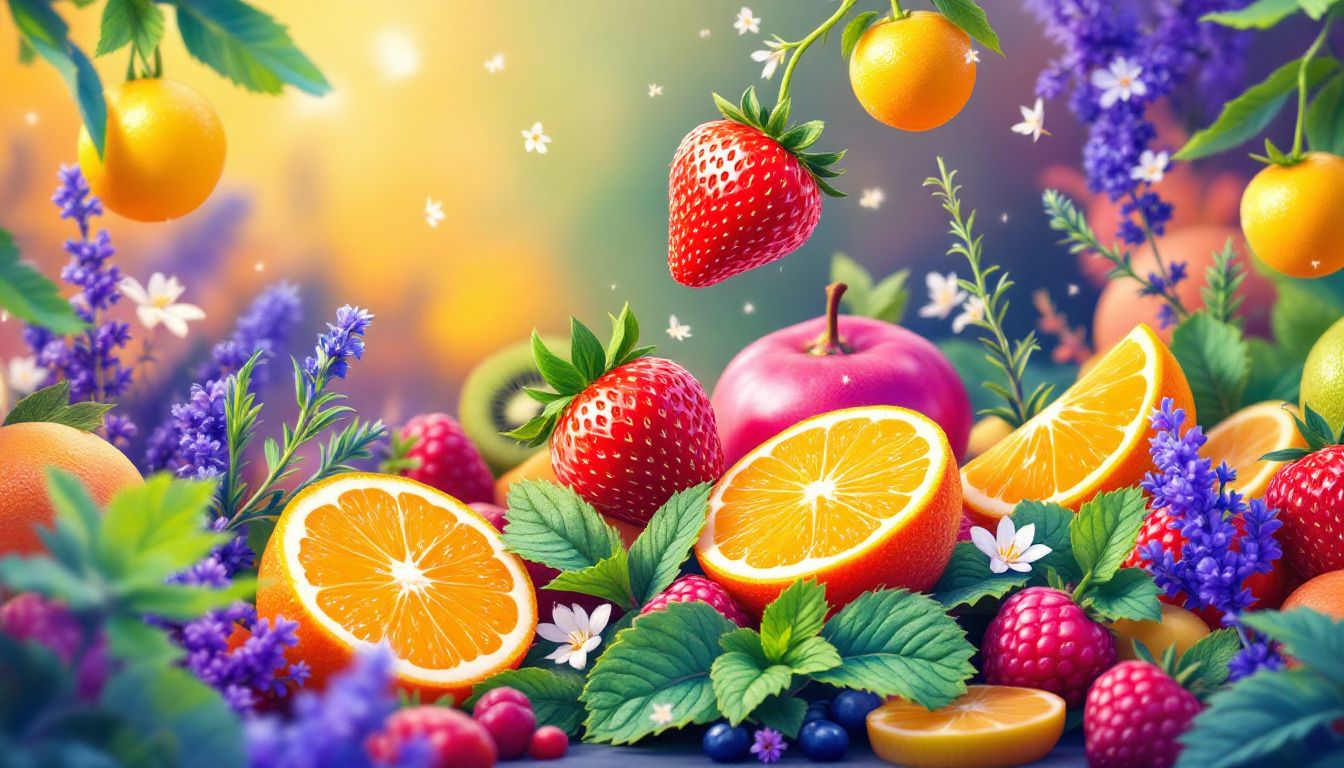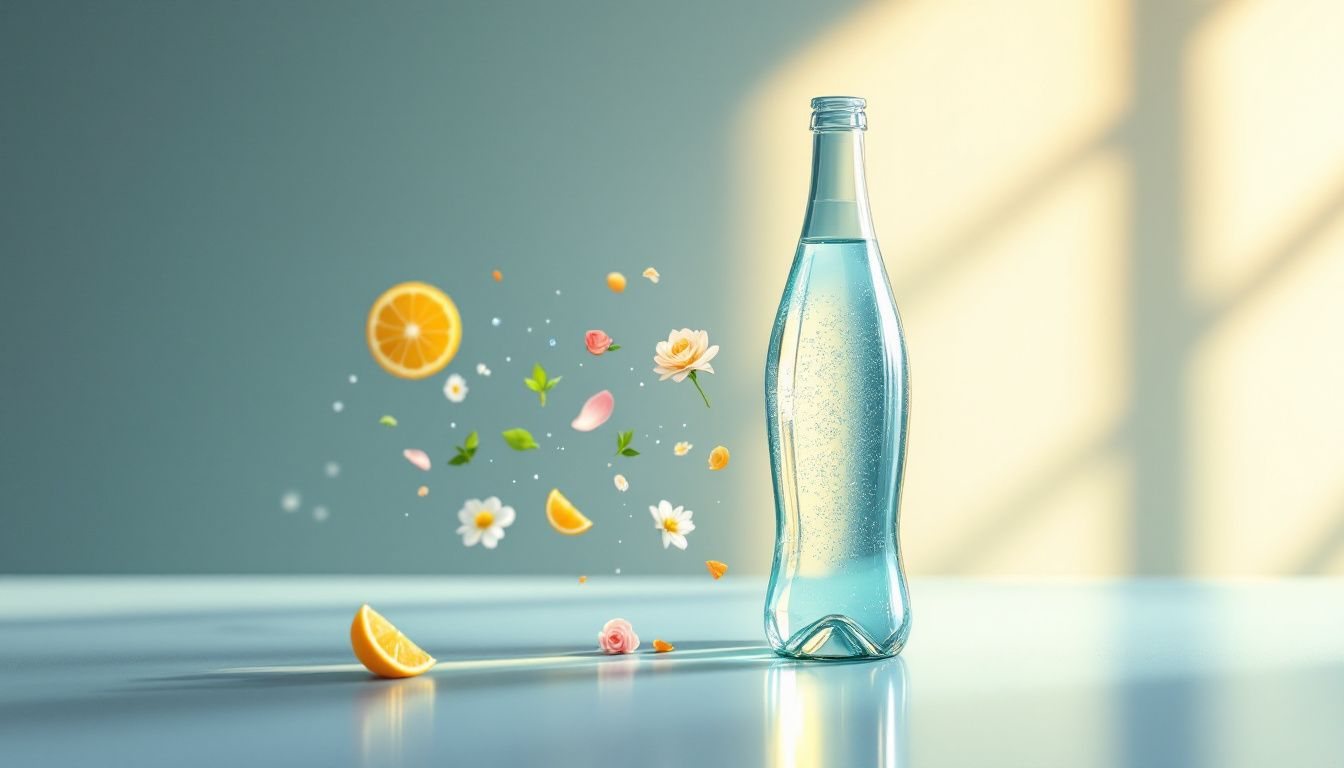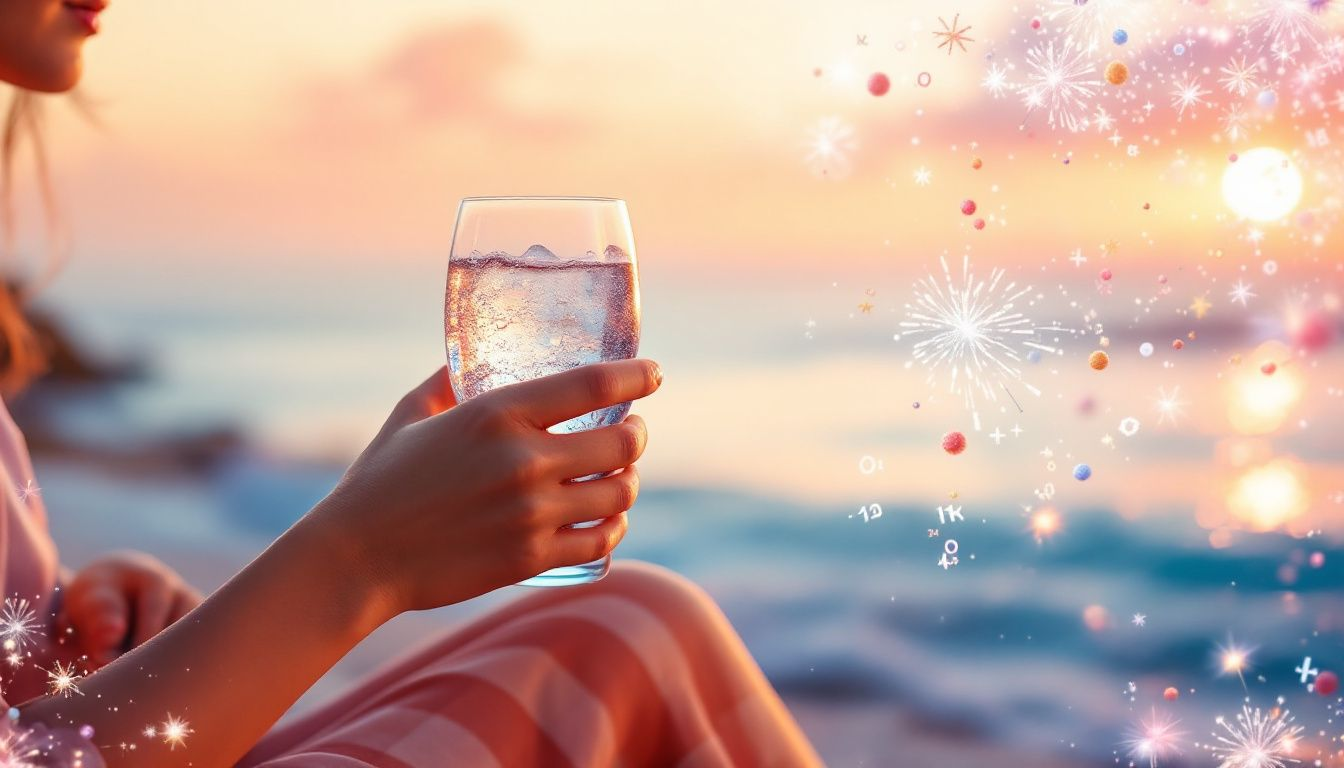
Natural flavors in sparkling water come from real plant or animal sources. They are extracted using pressing, distillation, and steaming methods. These flavors enhance taste without artificial ingredients, making sparkling water a healthier choice. This article covers what are natural flavors in sparkling water, how they’re made, and why they’re preferred over artificial ones.
What Are Natural Flavors?

Natural flavors are vital in the food and beverage industry, defined by the FDA as:
-
essential oils
-
oleoresins
-
essences
-
extractives
-
protein hydrolysates
-
distillates
-
products from plants, meat, eggs, or dairy used primarily for flavoring
Derived from edible plants and animals, these extracted flavors are obtained mainly through extraction methods.
Volatile compounds in fruits, vegetables, and herbs are carefully extracted to create these flavors, adding diverse taste profiles to our foods and drinks, from citrus zest to the warmth of spices. It’s like capturing nature’s essence in a bottle!
Natural flavors provide rich, complex tastes without artificial ingredients. The refreshing taste of ripe strawberries or the aroma of fresh basil can transform plain carbonated water into a delightful experience with other natural flavors.
The Role of Natural Flavors in Sparkling Water

Natural flavors enhance the taste of sparkling water, turning plain carbonated water into a vibrant and enjoyable beverage. They mimic soda’s appeal without the added calories or sugars, making sparkling water a healthy alternative to sugary sodas and juices.
The intensity of these flavors allows them to be used in small amounts, ensuring the water’s nutritional profile remains unaffected. Thus, you can enjoy a burst of flavor without extra calories or sugars.
A bottle of fizzy water with lime or a glass of seltzer with a splash of berry, natural flavors make sparkling water a refreshing and guilt-free indulgence. They provide an extra zing that elevates your hydration, making it as exciting and satisfying as soda.
How Are Natural Flavors Extracted?
Creating natural flavors involves various extraction methods to capture nature’s essence. Physical methods like pressing, distillation, and steaming are commonly used. For instance, essential oils can be extracted from plants to develop distinctive flavors for sparkling water.
Pressing mechanically squeezes the source material to release essential oils, while distillation uses steam to separate these oils from the plant matter. Steaming passes steam through plant material, capturing volatile compounds to create flavor essences.
These extraction processes ensure that the flavors are distinct and enjoyable, enhancing the taste experience of beverages like sparkling water. Careful extraction of natural essence oils ensures every sip of your sparkling water is packed with the purest flavors.
Differences Between Natural and Artificial Flavors
Understanding the differences between natural and artificial flavors helps you make informed choices. Natural flavors come from original plant or animal sources, while artificial flavors are chemically created to mimic natural flavors without natural components. This distinction is significant in the food and beverage industry.
Natural flavors are sourced directly from nature, making their extraction resource-intensive and sometimes cumbersome. Conversely, artificial flavors are often produced in a controlled lab environment, resulting in higher purity and potency. Some artificial flavors can match or exceed the intensity of their natural counterparts.
However, products labeled as ‘natural’ are not necessarily free from artificial ingredients contained because the term lacks a strict legal definition. This can lead to confusion for consumers trying to avoid artificial ingredients.
Common Sources of Natural Flavors in Sparkling Water
The sources of natural flavors in sparkling water are diverse and delightful. Citrus fruits like lemons, limes, and oranges frequently impart refreshing flavors. A splash of zesty lemon or a hint of tangy lime can transform plain carbonated water into a vibrant, flavorful drink.
Berries like strawberries, raspberries, and blueberries are also popular choices, adding sweetness and a burst of color to sparkling water, making each sip a sensory delight. Fresh herbs like mint and basil enhance the taste with their aromatic qualities, adding a fresh twist to your beverage.
Tropical fruits like pineapple and mango are favored for their vibrant flavors, while melons like watermelon and cantaloupe offer a light and refreshing taste. These natural ingredients ensure that every bottle of sparkling water is a unique and enjoyable experience.
Regulatory Standards for Natural Flavors
Regulatory standards for natural flavors ensure that the flavors in our foods and beverages are safe and of high quality. The FDA oversees natural flavorings through regulations outlined in CFR Title 21, Part 101.22, ensuring the flavors originate from safe, natural sources without artificial components.
The FDA’s Generally Recognized As Safe (GRAS) designation means natural flavorings do not require premarket approval, simplifying the process for manufacturers. If a natural flavor contains a non-GRAS substance, a food additive petition must be submitted to the FDA for approval.
This regulatory framework ensures that the natural flavors in your sparkling water are safe and compliant with federal standards.
The Science Behind Flavor Creation
Creating natural flavors is a fascinating scientific process involving various extraction methods. Essential oils, often the basis of natural flavors, can be extracted using steam distillation, cold pressing, and solvent extraction. Microwave-assisted extraction enhances the yield of essential oils by using microwave energy to rupture plant cell walls.
Supercritical fluid extraction, primarily using carbon dioxide, operates at high pressure and low temperatures to protect volatile compounds. Ultrasound-assisted extraction employs sound waves to facilitate extraction, reducing processing time and increasing yield. Cold pressing is a traditional method to extract oils from citrus peels without heat, preserving their natural aroma and nutritional qualities.
Hydrodistillation involves boiling plant materials in water, but high temperatures can degrade sensitive components. These advanced techniques ensure that natural flavors created are both high quality and true to their natural sources.
Health Considerations of Drinking Sparkling Water with Natural Flavors

Drinking sparkling water with natural flavors offers several health benefits. It effectively serves as an alternative for those reducing their soda consumption, providing the same fizzy satisfaction without added sugars. Sparkling water is calorie-free, making it a more enjoyable alternative to still water for hydration.
Natural flavors can enhance hydration, making carbonated water as effective as still water for staying hydrated. Additionally, sparkling water can prolong feelings of fullness after meals compared to still water. Research indicates that sparkling water does not adversely impact bone health despite concerns about its acidity.
A small study suggests that carbonated water may improve heart health by enhancing blood flow to the heart. Whether you’re looking for a healthy alternative to soda or simply enjoy the taste, flavored sparkling water can be a great choice without compromising your health.
Popular Brands Using Natural Flavors
Several popular brands have embraced the use of natural flavors in their sparkling waters. Hint sparkling water is praised for using only natural flavors, offering a refreshing taste without added sugars or artificial ingredients. Spindrift stands out as the only brand that incorporates real squeezed fruit juice for authentic flavor.
Bubly, produced by Pepsi, is noted for its fun branding and aims to deliver a soda-like experience with its flavored sparkling waters. Lagunitas, known for its brewery products, has ventured into sparkling water, offering a unique hoppy flavor that differentiates it in the market.
These brands have successfully leveraged natural flavors to create beverages that are both enjoyable and health-conscious.
Why wait for flavor inspiration when you can create it yourself?
With Drinkmate SG, you have the power to carbonate any beverage, including your favorite natural flavors. Say goodbye to artificial sodas and hello to a world of endless, guilt-free refreshment.
👉 Transform Your Hydration Today! Explore Drinkmate’s range of innovative soda makers and syrups. Add a burst of natural flavor to your sparkling water and elevate your hydration game—all in the comfort of your home.
🌟 Click here to discover how Drinkmate can revolutionize your beverages! Shop Now
Frequently Asked Questions
What are natural flavors?
Natural flavors come from plants, animals, or microorganisms, and mainly serve to add flavor to food and drinks. So next time you see "natural flavors" on a label, it’s all about enhancing taste with ingredients sourced from nature!
How are natural flavors used in sparkling water?
Natural flavors in sparkling water enhance its taste, giving you a soda-like experience without the calories or sugars. It's a great way to enjoy a refreshing drink!
What is the difference between natural and artificial flavors?
Natural flavors are derived from real plant or animal sources, while artificial flavors are synthesized in labs to imitate those tastes. Simply put, one is from nature, and the other is man-made.
Are there any health benefits to drinking sparkling water with natural flavors?
Absolutely! Drinking sparkling water with natural flavors is a great way to stay hydrated, curb cravings, and enjoy a calorie-free beverage that’s beneficial for your heart health.
What brands are known for using natural flavors in their sparkling water?
If you're looking for sparkling water that uses natural flavors, Hint, Spindrift, Bubly, and Lagunitas are great options. They focus on real ingredients to elevate your refreshment without any artificial stuff!
